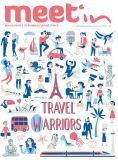
|
MeetIN 057 / Especial Ferias 2021 - Special Shows 2021
|

|
MeetIN 057 / Especial Ferias 2021 - Special Shows 2021
|
|
|
|

|
Responsable de la publicación:
Título publicación:
MeetIN 057 / Especial Ferias 2021 - Special Shows 2021
Idioma:
Spanish
|
|
Número de páginas:
100
|
Número de enlaces incluidos:
31
|
|
arrastar
Pasar páginas izquierda o derecha
|
|
|
pizca
Ampliar o reducir Zoom en la página
|
|
|
mover
Cuando está en modo Zoom, permite moverse por la página
|
|
|
toque
Visualizar/Ocultar controles del visor
|
|
|
doble toque
En un enlace lo abre. Fuera de un enlace, amplia o reduce el zoom en la página.
|
|
|
rotar
Ver diferentes perspectivas: apaisado (2 pages), vertical (1 page)
|